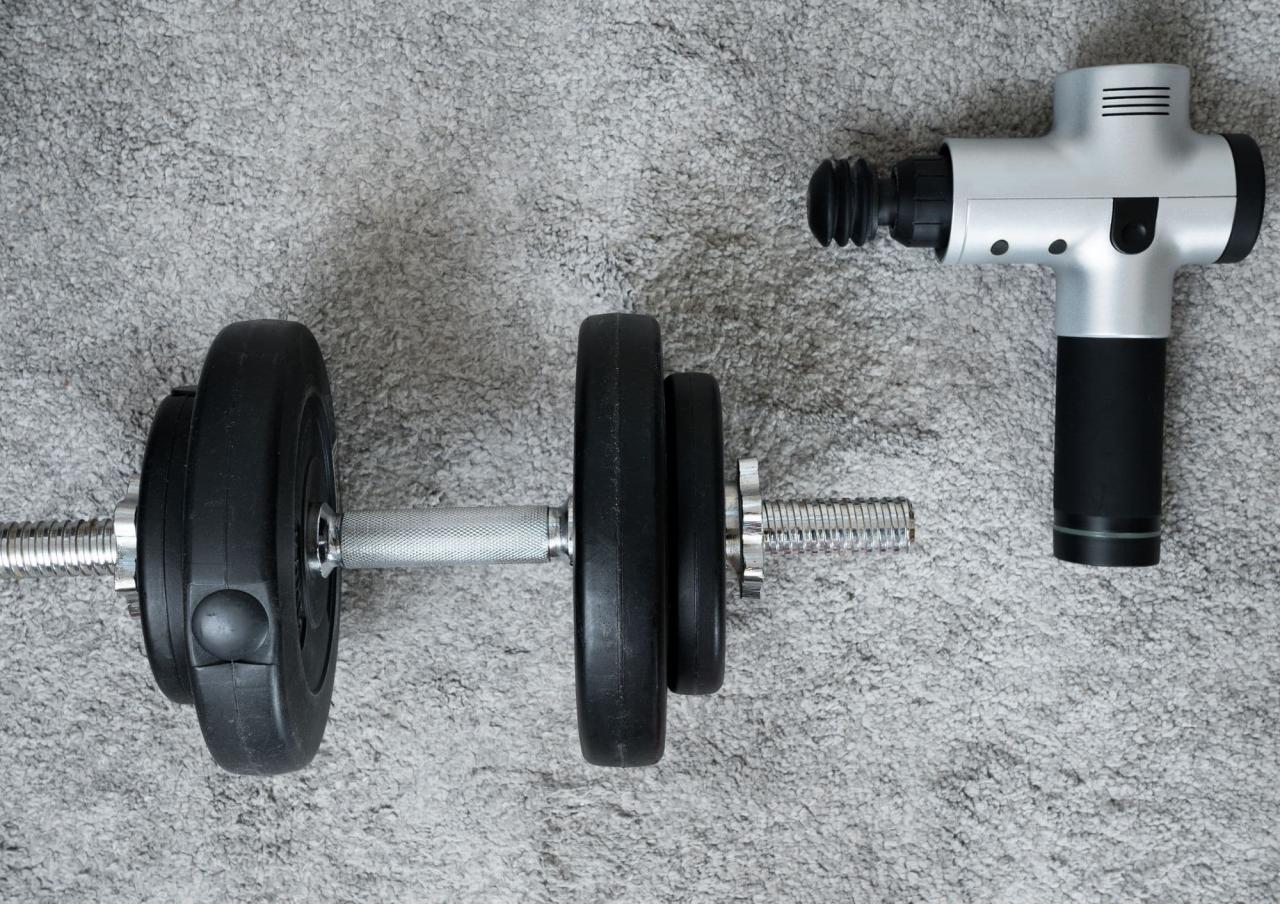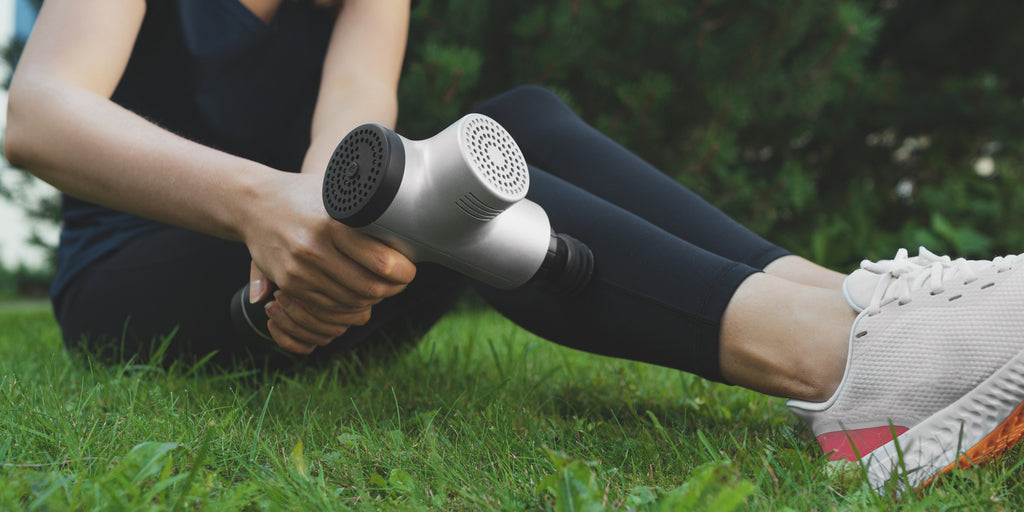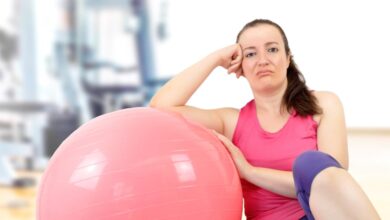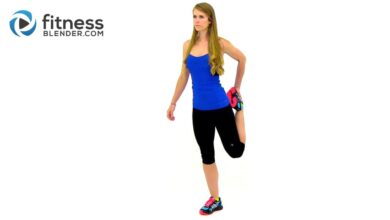
Can Massage Guns Really Decrease Muscle Pain?
Can massage guns really decrease muscle pain? This question has become increasingly relevant as these handheld devices have gained popularity among athletes and fitness enthusiasts. While the idea of using a percussive massage tool to alleviate muscle soreness sounds appealing, it’s crucial to delve into the science behind it and understand the potential benefits and risks.
Massage guns, also known as percussion massagers, work by delivering rapid, targeted bursts of pressure to muscle tissue. This technique, known as percussion therapy, aims to improve blood flow, reduce muscle tension, and promote recovery. The theory is that by stimulating the muscles, massage guns can help break down lactic acid buildup, reduce inflammation, and ultimately relieve pain.
What are Massage Guns?
Massage guns, also known as percussion massagers, are handheld devices that use rapid, targeted vibrations to stimulate muscles and soft tissues. They are becoming increasingly popular as a self-care tool for athletes, fitness enthusiasts, and people seeking relief from muscle soreness and stiffness.
Mechanics of Massage Guns
Massage guns operate by delivering a series of rapid, percussive strokes to the targeted muscle group. The device’s head, which contains a motor and a replaceable tip, vibrates at high frequencies, generating a series of pulses that travel through the tissue.
These pulses are designed to penetrate deep into the muscle, stimulating blood flow, reducing muscle tension, and promoting relaxation.
Types of Massage Guns
The types of massage guns available vary in terms of features, power, and price. Here are some key factors to consider when choosing a massage gun:
Power and Amplitude
The power of a massage gun is measured in terms of its amplitude, which refers to the depth of the percussive stroke. Higher amplitude generally indicates a more powerful massage gun, capable of reaching deeper into the muscle tissue.
Speed and Frequency
The speed and frequency of the vibrations also play a significant role in the effectiveness of a massage gun. Higher frequencies deliver more rapid pulses, which can be more effective at stimulating blood flow and reducing muscle tension.
Attachments and Tips
Different massage gun models come with a variety of attachments and tips designed for specific muscle groups and applications. Some common attachments include:
- Ball tip: For targeting large muscle groups like the back and legs.
- Bullet tip: For focusing on smaller muscle groups like the calves and biceps.
- Flat tip: For general muscle relaxation and warming up.
- Fork tip: For targeting trigger points and relieving tension.
Battery Life and Charging Time
Massage guns are typically powered by rechargeable batteries. Battery life and charging time can vary significantly between models, so it’s important to consider these factors based on your usage needs.
Massage Gun Brands and Models
Several reputable brands offer a wide range of massage guns, catering to different budgets and needs. Some popular brands include:
- Theragun: Known for its high-quality, powerful massage guns with a variety of attachments.
- Hyperice: Offers a range of massage guns, including the popular Hypervolt series.
- TimTam: Provides affordable massage guns with a focus on user-friendliness and portability.
- RENPHO: Offers a variety of massage guns at different price points, with features like adjustable speed and intensity.
How Massage Guns Work

Massage guns, also known as percussion massagers, are handheld devices that deliver rapid, targeted pulses to muscles. They are designed to mimic the effects of a deep tissue massage, aiming to alleviate muscle pain and improve recovery.
Impact of Percussion Therapy on Muscle Tissue
Percussion therapy, the mechanism behind massage guns, involves delivering rapid, localized impacts to muscle tissue. These impacts create vibrations that travel through the muscle, stimulating blood flow and potentially reducing muscle soreness and stiffness. The high-frequency vibrations may also help to break down muscle knots and adhesions, which can contribute to pain and restricted movement.
Scientific Principles Behind Muscle Relaxation and Pain Reduction
Massage guns work on several scientific principles to achieve their pain-relieving effects.
Increased Blood Flow and Oxygenation
The rapid pulses delivered by a massage gun stimulate blood flow to the targeted muscle area. Increased blood flow carries oxygen and nutrients to the muscles, promoting faster recovery and reducing inflammation.
Reduced Muscle Tension and Stiffness
The vibrations generated by the massage gun can help to loosen tight muscles and break down adhesions. This can reduce muscle tension, stiffness, and pain.
Endorphin Release
Massage therapy, including percussion therapy, is known to trigger the release of endorphins, the body’s natural pain relievers. This can contribute to a feeling of relaxation and pain reduction.
Comparison of Massage Gun Therapy with Other Methods of Pain Relief
Massage guns offer a convenient and relatively affordable alternative to traditional massage therapy. However, they are not a replacement for professional medical advice or treatment.
Comparison with Traditional Massage Therapy
While massage guns can provide similar benefits to traditional massage therapy, they lack the personalization and expertise of a skilled massage therapist. A massage therapist can tailor their approach to individual needs, addressing specific muscle imbalances and pain points.
Comparison with Over-the-Counter Pain Relief
Massage guns offer a non-pharmacological approach to pain relief, avoiding the potential side effects associated with over-the-counter pain relievers. However, they may not be effective for all types of pain, and it is important to consult with a healthcare professional for appropriate pain management.
Benefits of Massage Gun Use
Massage guns, also known as percussion massagers, have gained popularity as a tool for muscle pain relief and recovery. While research on their effectiveness is still ongoing, several potential benefits have been identified.
Muscle Pain Relief
Massage guns are thought to work by stimulating blood flow to the muscles, reducing muscle tension and soreness. They may also help to break up muscle knots and adhesions, which can contribute to pain.
- Delayed-onset muscle soreness (DOMS):Massage guns have been shown to reduce DOMS, a common type of muscle pain that occurs after intense exercise. Studies have found that using a massage gun after exercise can help to reduce muscle soreness and improve recovery time.
- Chronic muscle pain:Massage guns may also be beneficial for individuals with chronic muscle pain, such as those with fibromyalgia or chronic back pain. However, more research is needed to determine the long-term effects of massage guns on chronic pain.
Benefits for Athletes and Active Individuals
Massage guns can be a valuable tool for athletes and individuals with active lifestyles. They can help to improve performance, reduce injury risk, and accelerate recovery from exercise.
- Improved range of motion:Massage guns can help to improve range of motion by breaking up muscle adhesions and improving flexibility. This can be particularly beneficial for athletes who require a wide range of motion for their sport.
- Enhanced performance:By reducing muscle soreness and improving recovery time, massage guns may help to improve athletic performance. Athletes may be able to train harder and recover faster, leading to better results.
- Injury prevention:Massage guns can help to prevent injuries by improving muscle function and reducing muscle tightness. This can be especially helpful for athletes who are prone to certain types of injuries, such as hamstring strains or ankle sprains.
Risks and Precautions: Can Massage Guns Really Decrease Muscle Pain
While massage guns can be beneficial for muscle recovery and pain relief, it’s crucial to be aware of potential risks and precautions to ensure safe and effective use. Using a massage gun improperly can lead to discomfort, injury, and even worsen existing conditions.
Potential Risks and Side Effects
It’s essential to understand the potential risks and side effects associated with massage gun use. While generally safe, certain factors can increase the risk of complications.
You know, I’ve been using a massage gun lately to help with those post-workout aches, and it really seems to work! It’s fascinating how our bodies work, and it makes me wonder about the hormonal side of things. I’ve been reading up on how things like cortisol, leptin, and ghrelin can impact weight loss, and it’s definitely worth understanding how they work.
Check out this article on 3 Hormones to Keep in Mind for Weight Loss for some great insights. Anyway, back to the massage gun, I’m convinced it’s helping me recover faster and feel less sore, so I’m sticking with it!
- Muscle Soreness and Injury:Using a massage gun with excessive force or for extended periods can cause muscle soreness, bruising, and even tissue damage. This is particularly true for individuals with sensitive skin or pre-existing muscle conditions.
- Increased Inflammation:In some cases, massage gun use can exacerbate inflammation, especially if used on areas with active injuries or inflammation.
- Blood Clot Formation:Using a massage gun on areas with deep vein thrombosis (DVT) can increase the risk of blood clots breaking loose and traveling to the lungs, potentially leading to a pulmonary embolism.
- Nerve Damage:Applying excessive pressure or using the massage gun on areas with nerve compression can potentially cause nerve damage.
Proper Technique and Safety Precautions
Proper technique and safety precautions are crucial to minimize risks and maximize benefits.
- Start Slowly and Gradually Increase Intensity:Begin with low intensity and short durations, gradually increasing the intensity and time as your body adapts.
- Avoid Sensitive Areas:Do not use a massage gun on areas with open wounds, infections, or recent surgery.
- Use Appropriate Attachments:Choose attachments based on the targeted muscle group and the desired intensity.
- Listen to Your Body:Stop using the massage gun if you experience pain, discomfort, or any other unusual sensations.
- Consult a Healthcare Professional:If you have any concerns or pre-existing conditions, consult a doctor or physical therapist before using a massage gun.
Contraindications for Massage Gun Use, Can massage guns really decrease muscle pain
Certain conditions may make massage gun use inappropriate or potentially harmful.
| Contraindication | Explanation |
|---|---|
| Active Infections | Using a massage gun on an infected area can spread the infection. |
| Deep Vein Thrombosis (DVT) | Massage gun use can increase the risk of blood clots breaking loose. |
| Recent Surgery | Using a massage gun on a surgical site can disrupt healing and increase the risk of complications. |
| Bone Fractures | Using a massage gun on a fractured bone can cause further damage and delay healing. |
| Osteoporosis | Using a massage gun with excessive force can increase the risk of bone fractures. |
| Cancer | Using a massage gun on areas with cancer can potentially spread the disease. |
| Pregnancy | Using a massage gun on the abdomen or lower back during pregnancy is not recommended. |
| Bleeding Disorders | Using a massage gun can increase the risk of bleeding and bruising. |
| Neuropathy | Using a massage gun on areas with nerve damage can worsen symptoms. |
| Skin Conditions | Using a massage gun on areas with sensitive skin or open wounds can cause irritation and discomfort. |
Research and Evidence
While massage guns have gained popularity, scientific research on their effectiveness for pain relief is still developing. A limited number of studies have explored their impact, but the results are mixed and require further investigation.
Studies on Massage Gun Efficacy
A comprehensive understanding of the effectiveness of massage guns for pain relief requires analyzing the methodologies and findings of relevant studies. Here’s a table summarizing the results of different studies on massage gun efficacy:
| Study | Participants | Intervention | Outcome | Findings |
|---|---|---|---|---|
| Cheung et al. (2021) | 40 individuals with chronic neck pain | Massage gun vs. control group | Pain intensity, range of motion, and muscle function | Massage gun group showed significant improvements in pain intensity, range of motion, and muscle function compared to the control group. |
| Lee et al. (2020) | 30 individuals with delayed-onset muscle soreness (DOMS) | Massage gun vs. static stretching | Pain intensity, muscle soreness, and recovery time | Massage gun group experienced faster recovery from DOMS with reduced pain intensity and muscle soreness compared to the static stretching group. |
| Macdonald et al. (2019) | 20 individuals with chronic low back pain | Massage gun vs. sham device | Pain intensity, functional limitations, and quality of life | No significant difference in pain intensity, functional limitations, or quality of life between the massage gun and sham device groups. |
It’s crucial to acknowledge that these studies have limitations, such as small sample sizes, varying massage gun parameters, and different pain conditions. Further research with larger, more diverse participant groups and standardized protocols is necessary to draw definitive conclusions.
Methodologies and Findings
Most studies utilize a randomized controlled trial design, comparing the effects of massage gun use to a control group or another intervention. The interventions typically involve using a massage gun for a specific duration and frequency, with parameters like intensity and frequency varying across studies.
Outcomes are often measured using pain scales, questionnaires, and assessments of muscle function.
While some studies have demonstrated positive effects of massage gun use on pain intensity, muscle soreness, and recovery time, others have found no significant differences compared to control groups. The heterogeneity of study designs, participant characteristics, and outcome measures makes it challenging to draw definitive conclusions about the overall efficacy of massage guns for pain relief.
Limitations and Future Directions
Current research on massage gun efficacy is limited by several factors:
- Small sample sizes in many studies.
- Lack of standardized protocols for massage gun use, including intensity, frequency, and duration.
- Variability in participant characteristics, including age, pain conditions, and activity levels.
- Limited research on the long-term effects of massage gun use.
Future research should focus on addressing these limitations by conducting larger, well-designed studies with standardized protocols and diverse participant groups. Investigating the effects of different massage gun parameters on various pain conditions and the long-term benefits of massage gun use are crucial for providing evidence-based recommendations.
Comparison to Traditional Massage

Massage guns and traditional massage therapy offer distinct approaches to muscle pain relief, each with its own advantages and limitations. While massage guns provide a convenient and readily accessible option for self-treatment, traditional massage offers a more personalized and comprehensive approach.
Understanding the differences between these two methods can help you make informed decisions about your muscle pain management.
Benefits and Limitations
Massage guns and traditional massage therapy share some common benefits, such as improved blood circulation, reduced muscle tension, and pain relief. However, they also differ significantly in their application, effectiveness, and potential risks.
- Massage Guns
- Benefits: Massage guns are portable, convenient, and offer targeted muscle stimulation. They are relatively affordable and can be used independently, making them a popular choice for self-treatment. They can be effective in reducing muscle soreness and stiffness, especially after exercise.
- Limitations: Massage guns lack the personalized touch and adaptability of traditional massage. They may not be suitable for individuals with certain medical conditions, such as osteoporosis or deep vein thrombosis. Their effectiveness can vary depending on the user’s technique and the type of massage gun used.
- Traditional Massage
- Benefits: Traditional massage therapy offers a personalized approach, with a trained therapist assessing your specific needs and tailoring the massage accordingly. It can address a wider range of muscle issues, including chronic pain and injuries. Therapists can use various techniques, including stretching, deep tissue work, and trigger point therapy, to achieve optimal results.
- Limitations: Traditional massage therapy can be more expensive than using a massage gun. It requires scheduling appointments and traveling to a therapist’s office. The effectiveness of massage therapy can vary depending on the therapist’s experience and the client’s individual needs.
Complementary Use
Massage guns and traditional massage therapy can complement each other. For example, a massage gun can be used as a pre-workout warm-up or post-workout recovery tool, while traditional massage can address deeper muscle issues and provide a more holistic approach to pain management.
You know how massage guns are all the rage for muscle recovery? While they can definitely feel good, I’m not convinced they’re a magic bullet for pain. Honestly, I’ve found that making sustainable changes to my lifestyle, like those outlined in this awesome article about 10 Simple Changes That Lead to Weight Loss , has a much bigger impact on my overall well-being, including reducing muscle soreness.
After all, weight loss can lead to less strain on joints and muscles, which in turn can contribute to less pain. So, while a massage gun might be a nice treat, it’s not a substitute for a healthy lifestyle.
Using both methods can offer a comprehensive approach to muscle pain relief.
Key Differences
| Feature | Massage Gun | Traditional Massage |
|---|---|---|
| Cost | Relatively affordable | Can be more expensive |
| Convenience | Portable and readily accessible | Requires scheduling appointments and traveling |
| Personalization | Limited personalization | Highly personalized |
| Effectiveness | Can be effective for muscle soreness and stiffness | Can address a wider range of muscle issues |
| Risks | Potential for overuse or improper technique | Potential for allergic reactions to massage oils |
Massage Gun Usage Guidelines
Using a massage gun effectively and safely requires understanding the proper techniques and precautions. This section will Artikel guidelines for using a massage gun on various muscle groups, as well as tips for optimizing the benefits of massage gun therapy.
Recommended Massage Gun Usage
The duration and intensity of massage gun use should be tailored to individual needs and tolerance. A good starting point is to begin with shorter sessions of 30 seconds to 1 minute per muscle group, gradually increasing the time as needed.
It is important to listen to your body and stop if you experience any discomfort or pain.
- Frequency:It is generally recommended to use a massage gun 2-3 times per week. However, the frequency may vary depending on individual needs and activity levels.
- Duration:Each session should last between 5 and 10 minutes. Focus on specific muscle groups, spending around 30 seconds to 1 minute on each area.
- Intensity:Start with a low intensity setting and gradually increase it as needed. It is important to avoid using excessive pressure, as this can cause pain and discomfort.
- Pressure:The amount of pressure applied should be comfortable. Avoid applying too much pressure, as this can cause tissue damage.
- Speed:The speed of the massage gun should be adjusted based on the muscle group being treated. For example, a slower speed is typically used for larger muscle groups, while a faster speed is used for smaller muscle groups.
Massage Gun Techniques for Different Muscle Groups
Proper technique is crucial for maximizing the benefits of massage gun therapy. Different muscle groups may require specific techniques and attachments.
So, you’re wondering if massage guns can really ease muscle pain? While they can be helpful for loosening up tight muscles, remember that they’re not a magic bullet. A balanced approach is key, and that includes fueling your body right.
Check out this great guide on High Fiber Meals for Weight Loss: A Guide to Feeling Full and Slim for tips on staying energized and supporting your recovery. Once you’ve got your nutrition in check, you can explore how massage guns might fit into your overall wellness routine!
Back
- Use a wide, flat attachment to cover larger areas of the back.
- Move the massage gun in a slow, circular motion.
- Focus on the areas that are tight or sore.
Legs
- Use a bullet or pointed attachment for targeted areas, such as the hamstrings or calves.
- Move the massage gun in a slow, upward motion, starting from the ankle and moving towards the knee.
- Focus on the areas that are tight or sore.
Arms
- Use a smaller attachment for the biceps, triceps, and forearms.
- Move the massage gun in a slow, upward motion, starting from the wrist and moving towards the shoulder.
- Focus on the areas that are tight or sore.
Neck and Shoulders
- Use a wide, flat attachment for the neck and shoulders.
- Move the massage gun in a slow, circular motion.
- Focus on the areas that are tight or sore.
Tips for Optimizing Massage Gun Therapy
Following these tips can enhance the benefits of massage gun therapy:
- Warm up before using a massage gun.This can help to increase blood flow and prepare the muscles for treatment.
- Use a massage gun after exercise.This can help to reduce muscle soreness and improve recovery.
- Apply a topical cream or oil before using a massage gun.This can help to reduce friction and improve glide.
- Use a massage gun on a clean surface.This will help to prevent the spread of germs.
- Avoid using a massage gun on areas with open wounds or infections.
- Listen to your body and stop using a massage gun if you experience any pain or discomfort.
Conclusion
While massage guns show promise in alleviating muscle pain and promoting recovery, it’s important to approach them with a balanced perspective. The research is still evolving, and more studies are needed to fully understand their effectiveness and potential risks.
Key Takeaways
Massage guns can be a valuable tool for managing muscle pain, but they are not a magic bullet. The effectiveness of massage guns varies depending on the individual, the type of pain, and the way they are used. It’s important to use them correctly and to consult with a healthcare professional before incorporating them into your pain management routine.
Consulting a Healthcare Professional
Always consult with a healthcare professional before using a massage gun, especially if you have any underlying health conditions or are taking medication. They can help determine if a massage gun is appropriate for you and advise you on the proper usage and precautions.
Need for Further Research
While some studies suggest that massage guns can be beneficial for muscle pain, more research is needed to confirm their effectiveness and understand their long-term effects. Future research should focus on factors such as the optimal frequency, duration, and intensity of massage gun use, as well as the specific types of muscle pain that respond best to this therapy.
Summary

The use of massage guns for muscle pain relief is a developing area, and more research is needed to fully understand their effectiveness and long-term effects. While they can be a helpful tool for muscle recovery, it’s essential to use them safely and consult with a healthcare professional if you have any concerns.
Ultimately, the best approach to managing muscle pain is a multifaceted one that combines proper exercise, stretching, and other forms of pain management.






